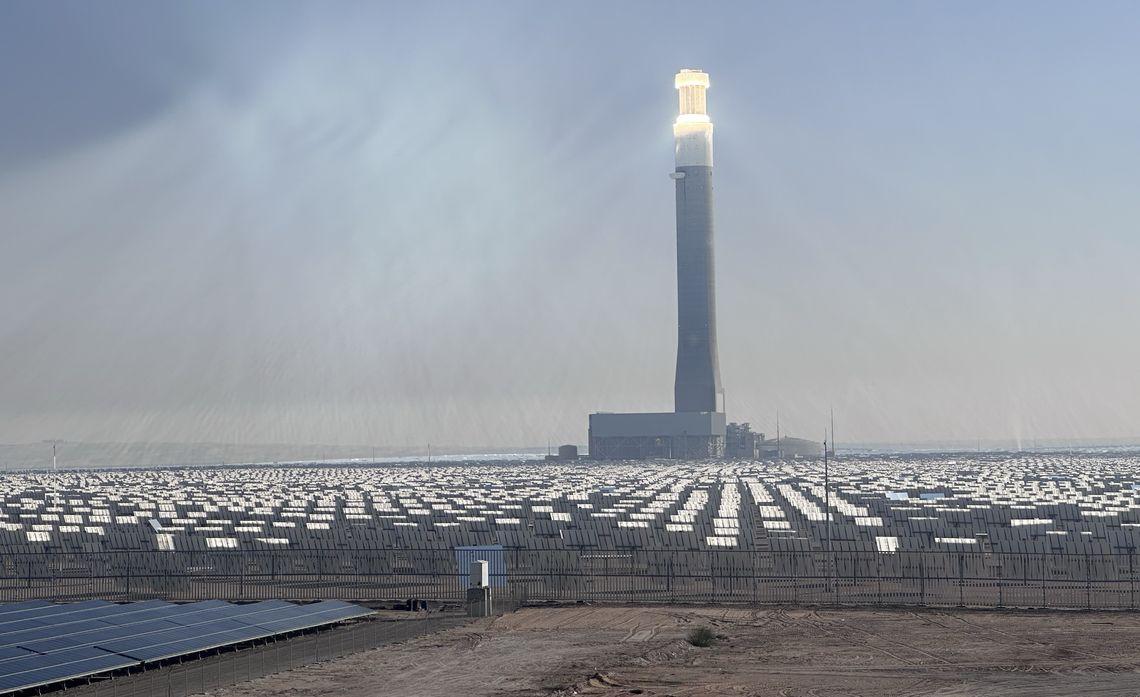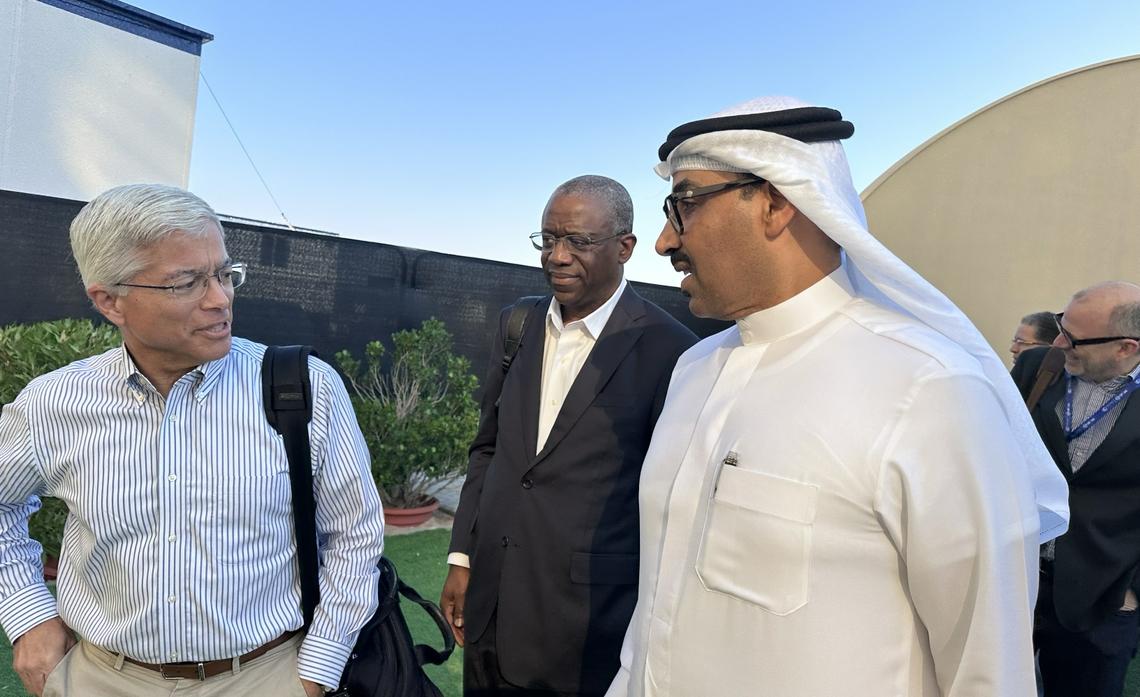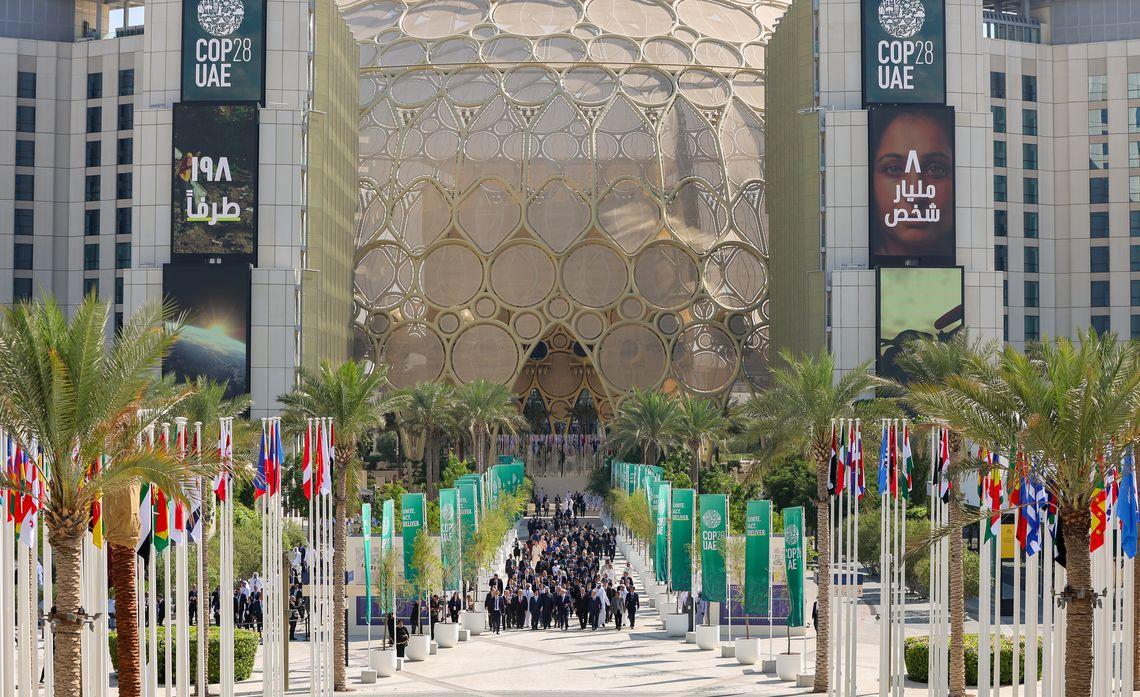COP28: Moving From Promises to Progress
At the global climate summit, Edison International urges dramatic action and reform to speed construction of emissions-reducing infrastructure.
Published 01-02-24
Submitted by Edison International

One of the highlights of Edison International’s trip to Dubai for the COP28 climate summit was visiting the massive Mohammed bin Rashid Al Maktoum Solar Park outside Dubai. With a planned capacity of 5,000 megawatts, it’s the world’s largest single solar power facility, and it will eliminate 6½ million tons of carbon emissions each year when complete in 2030.
Eleven years after the project’s launch, it is already halfway to its solar power generating goal. It is heralded as a shining example of a successful public-private partnership.
To put that in perspective, in the United States it can take 10 to 12 years — and often even more — just to build a new transmission line because of inefficient permitting regulations. Now that the federal government has approved hundreds of billions of dollars in incentives for new clean energy projects through the Inflation Reduction Act and the Infrastructure Investment and Jobs Act, there’s concern that permitting bottlenecks will slow the clean energy transition.
“We need hard, concrete results on things like siting and permitting reform,” said Edison International President and CEO Pedro Pizarro before he toured the solar facility at COP28. “Those investments need to make their way into steel in the ground and right now that isn’t happening fast enough.” Permitting delays are not just a U.S. problem. Several global CEOs who toured the solar facility expressed similar frustrations in the CEO roundtable.

Edison International joined a group of more than 25 global utilities at the climate summit in a pledge to triple global renewable energy capacity by 2030 and achieve net-zero greenhouse gas emissions by 2050. Reforming cumbersome siting and permitting regulations is imperative to meeting those clean energy goals.
Also participating in COP28 was Edison Energy, which is advising some of the world’s largest corporate, industrial and institutional companies on how to make science-based sustainability improvements in their operations, with a strong focus on supply chain reforms.
News coverage of COP28 was dominated by the role fossil fuels should play in the clean energy future. Pizarro and other energy industry leaders spent considerable time at COP28 discussing the merits of a “phase down” or “phase out” of fossil fuels. “For California, while we still see a need for fossil fuels in 2045 to maintain the most reliable and affordable pathway to meet the state’s climate goals, using negative carbon [carbon capture and offsets] is expected to address the emissions from those remaining fossil fuels,” Pizarro said.

“Doing this in a way that ensures reliability and resiliency is critical, so that’s why at least through 2045, it’s a phase down. Beyond that, probably it’s an eventually phase out as technologies mature,” Pizarro said.
Among the emerging technologies are offshore wind turbines, next-generation geothermal, hydrogen and power generated by smaller, advanced nuclear reactors that are safer and produce less waste.
The U.S. and 21 other nations at the summit pledged to triple their nuclear energy capacity by 2050, which U.S. Presidential Climate Envoy John Kerry called a crucial pillar to achieving net zero.
“We are agnostic about which technologies will prove to be most successful, however, we know that we will need all the tools in the toolbox,” Pizarro said.
For more on SCE’s clean energy efforts, visit energized.edison.com/cleanenergy.


Edison International
Edison International
Edison International (NYSE:EIX), through its subsidiaries, is a generator and distributor of electric power and an investor in energy services and technologies, including renewable energy. Headquartered in Rosemead, Calif., Edison International is the parent company of Southern California Edison, one of the nation’s largest electric utilities.
More from Edison International

